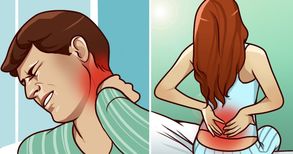
Often times, my patients at Soft Touch Chiropractic in Porter Ranch, CA complain of experiencing body stiffness immediately after waking up. We can look at that in two ways:
1. Stiffness in the morning is normal for a short period of time. As we wake up, our bodies are naturally inclined to stretch and with good reason. While stretching, our bodies send a signal to the brain saying that it is time to relax the joints. 2. Just like when we put a car into the parking gear and set the hand break to prevent it from going anywhere, our bodies produce chemicals that paralyze the muscles and joints when we fall asleep; that is the parking gear of our body. So why are we stiff after waking up? From the first point of view, if your joints are subluxated or in a locked position, the messages your body sends to the brain, indicating that it is time to relax the muscles, are blocked by the the subluxated joints, therefore prolonging the time that the body remains stiff. From the second point of view, the body's inability to get rid of the chemicals produced during sleep, will also prolong the time that the body remains stiff. The body itself produces 70% of toxins in our bodies. Those chemicals that keep us still during sleep must be disposed of by the liver after waking up. If the body does not detox itself of those chemicals, it's like driving a car while the hand break is on. If you are experiencing stiffness after waking up, visit your local chiropractor. A competent doctor of chiropractic can determine if you have inflamed or subluxated joints. He/She may suggest a detox of the internal organs or a visit to an acupuncturist for further treatment to detox the liver and kidneys. Please watch the video below produced by Dr. Masoud Shamaeizadeh, DC.
0 Comments
 A considerable percentage of musculoskeletal issues such as: low back pain, neck pain, shoulder pain, or even headaches are caused by emotional issues. According to Dr. John E. Sarno, MD, author of Healing Back Pain, when emotional issues are overwhelming, our bodies produce physical pain to distract us from emotional pain. Our bodies think we can more easily bear physical pain than emotional pain. Dr. Masoud Shamaeizadeh, DC of Soft Touch Chiropractic in Porter Ranch addresses this topic in the video below. Even though the cause of the pain stems from emotion, the physical pain is real; meaning real physiological changes are happening in the body such as muscle spasms, stiff joints and pinched nerves. Chiropractic or acupuncture care will alleviate the physical pain. However, if the underlining emotional issues are not dealt with, the pain will keep coming back. The classic example is of a person having pain on the right side and as soon as the pain is treated, it shifts to the left side or when the neck pain is taken care of, shoulder pain appears. The way a chiropractor knows that the physical pain stems from emotional stress is that he or she will take a thorough past and present physical history. Your chiropractor will look for things such as: work-related stress, family conflict, grief, anxiety and depression. Conditions such as peptic ulcer, digestive issues, hormone imbalance and PMS are all conditions caused directly by emotional stress. These telling signs will alert a chiropractor of the level of emotional stress a patient is under. One complication stemming from emotional issues is the overuse and possible addiction to pain killers and medication. Patients dealing with emotional stress are prone to self-medicating, which leads to a band-aid type solution for the pain, but does not address the root of the problem. Dr. Masoud Shamaeizadeh, DC of Soft Touch Chiropractic in Porter Ranch, recommends that a patient dealing with emotional stress learn about and practice mindful meditation, see a Neuro-linguistics Programming expert or a Hypnotherapist to help heal the emotional issues. This treatment along with chiropractic and/or acupuncture care will bring balance to the body and the mind. 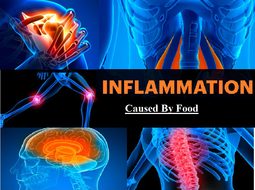
By Dr. Masoud Shamaeizadeh, DC When patients come to my office here at Soft Touch Chiropractic in Porter Ranch, I often ask them to change their diet, and their very first question is, "What does food have to do with my back pain?" Most people understand that if they have a heart problem, for example, they need to change their diet, but what about back pain? Inflammation in the body caused by food can mean the difference between walking to your chiropractor or crawling to your chiropractor. Sometimes the level of pain is directly correlated with levels of inflammation in the body. There are foods that are highly inflammatory which will cause pain or will aggravate pain. The top four culprits are:
Most patients exclaim, "That's everything I eat! What am I suppose to eat?" Generally patients with diets that contain large amounts of the items above will tend to have greater back problems. To those patients, I recommend a plant-based diet which includes large amounts of green leafy vegetables, a variety of season vegetables, fruit and legumes. Even a plant-based diet may create some inflammation if you have food allergies; so you might check what you are allergic to. If you don't know, be sure to check first. There are several labs that offer allergy testing. If you have back pain and you are consuming the four ingredients above, try eliminating them from your diet; that simple change, along with chiropractic care can alleviate the pain. Watch the following video produced by Dr. Masoud Shamaeizadeh that details how food can make you worse or better.
Click the Like button below
rel=”author”>Masoud Shamaeizadeh
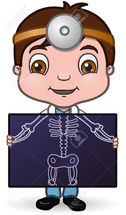
by Dr. Masoud Shamaeizadeh, DC Like any other doctor, chiropractors need to make observations. The most obvious way to know if you are out of alignment or out of wack is by your chiropractor observing your posture. But what is a chiropractor looking for when they observe or touch your back? That's the question on everyone's mind when they come to my office. I often get asked this question in my practice at Soft Touch Chiropractic in Porter Ranch. The first thing we are looking for is whether the vertebra is out of alignment. We compare the vertebrae to each other and to the overall spinal position. If one segment is out of position, we consider it misaligned. We also call this a sublaxation. The second thing we look for is for mobility of the joints. When a chiropractor touches a segment and it lacks mobility then the doctor know it is under stress. When a vertebra is misaligned, it pulls on the muscle that attaches to that vertebra, which creates a muscle spasm or stiffness in the muscle. So, the third thing a chiropractor looks for is muscle tone. If the muscle is hard or tight, it needs help. Last but not least, we look for pain because all of the conditions above cause pain. As each vertebra is being examined, a chiropractor looks for the response of the patient to find out if there is pain or not. Pain is not necessarily a bad thing. When you clearly have a misaligned spine, which is locked or fixated and the muscles are stiff and there is no pain when chiropractor presses on it, it is alarming because it means that that particular segment has been locked for a long period of time. Two possibilities are 1) the segment adapted to the bad position or 2) the disc in the segment has degenerated to the point that it has no sensation left. If this is the case, that means the misalignment existed and was neglected for a long period of years. All of the above conditions interfere with the transmission of information from your brain to your body and from your body to your brain. All control and coordination of your body is affected by misalignment, joint immobility and muscle stress. Even if you don't have pain, see your chiropractor today and have a thorough exam. One exam could make all the difference in your current and future lifestyle. It may mean the difference between being in a wheelchair or riding your bike in the countryside without pain well into your senior years. Watch the video below produced by Dr. Masoud Shamaeizadeh, DC.
Click the Like button below
rel=”author”>Masoud Shamaeizadeh
|
New Patient SpecialArchives
July 2024
Categories |

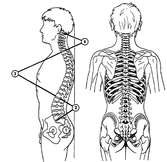

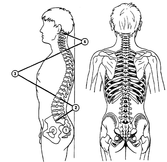

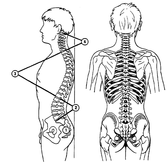
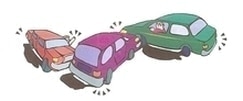
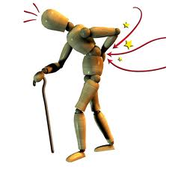
 RSS Feed
RSS Feed
